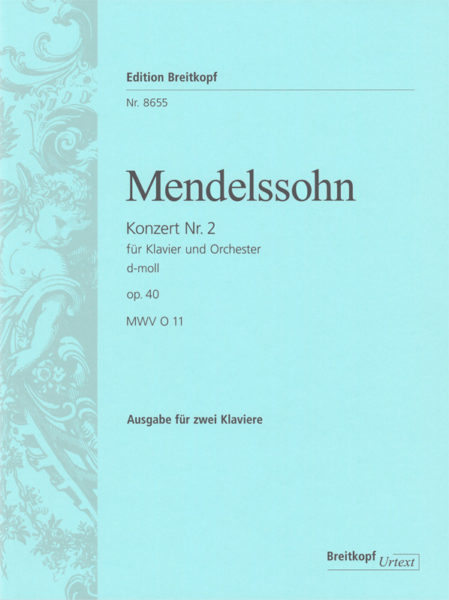Felix Mendelssohn Bartholdy (1809–1847) Klavierkonzert Nr. 2 d-moll op. 40 MWV O 11
Urtext nach der Leipziger Mendelssohn-Gesamtausgabe herausgegeben von Christoph Hellmundt [Klav,Orch] Dauer: 25'
Klavierauszug nach der Gesamtausgabe
In Partitur gedruckt; zur Ausführung werden zwei Exemplare benötigt.
48 Seiten | 23 x 30,5 cm | 199 g | ISMN: 979-0-004-18323-6 | geheftet
Der von Siegfried Petrenz erstellte Klavierauszug (Pianoforte II) geht auf den Notentext der Gesamtausgabe (LMA) zurück. Er bietet dem Pianisten größtmögliche Transparenz und damit beste Voraussetzungen für Einstudierung und Vortrag. Vorangestellt ist ein Vorwort des Herausgebers, das vor allem auf die wechselvolle Entstehungsgeschichte des Werks und die ersten Aufführungen eingeht. Bei der Uraufführung 1837 in Birmingham spielte Mendelssohn selbst den Solopart, und schon zu Lebzeiten des Komponisten errang das Werk durch verschiedene Solisten und drei Druckausgaben große Popularität.











